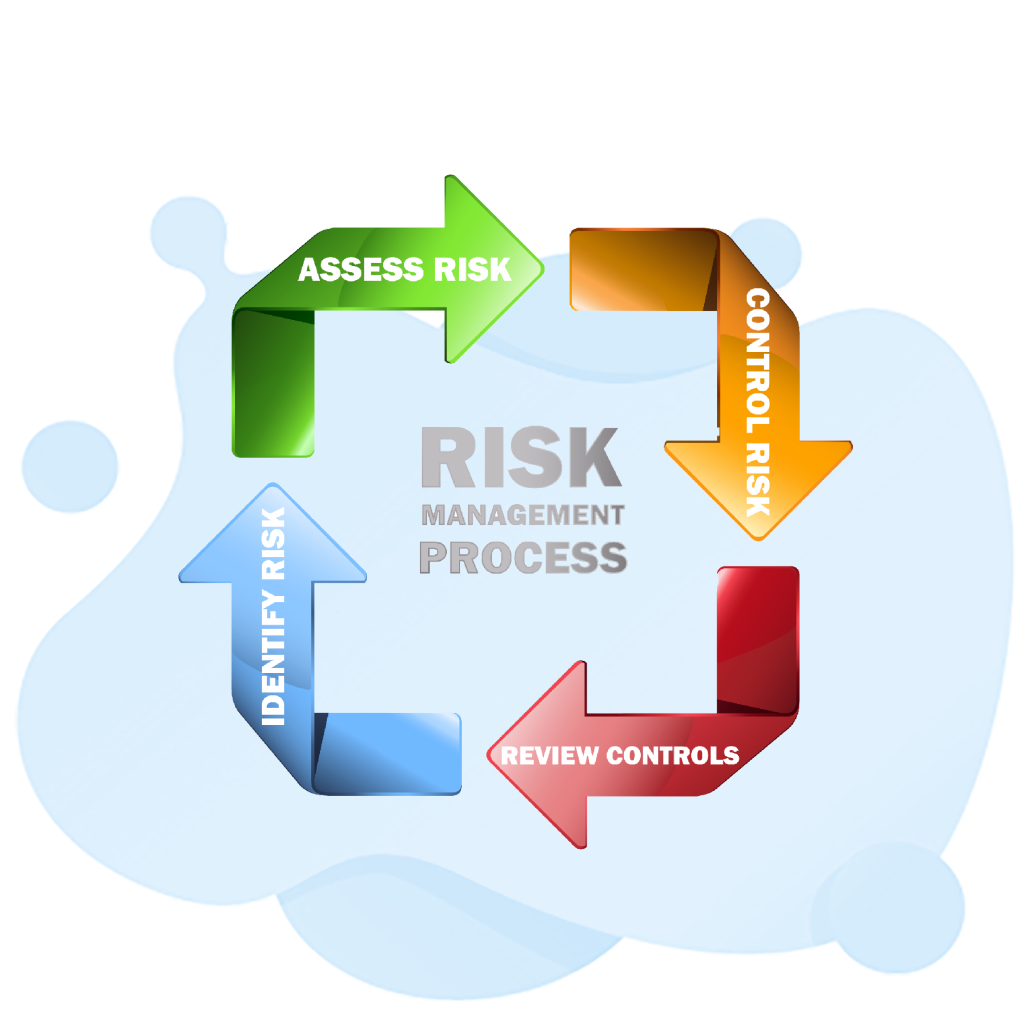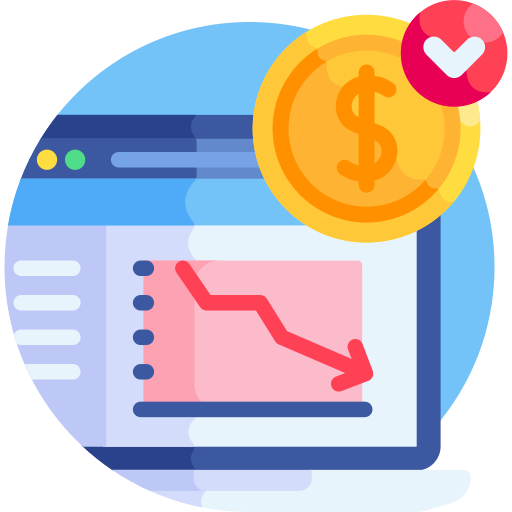Credit Risk Management Certification 2023

There is no new news under the sun, but rising interest rates, inflation, low unemployment, supply chain challenges, and febrile geopolitics are creating a climate of uncertainty that requires banks to rethink their credit playbooks. This is where advanced credit risk management tools can help.These processes include assessing borrowers’ ability to repay their debt. This is done through the five Cs: credit history, capacity to repay, capital, and associated collateral.
Free Credit Risk Management Practice Test Online
Credit Risk Management Software
Ensure compliance and business growth with credit risk management software that automates processes, increases transparency, and reduces errors. The best solutions also provide data visualization tools that make it easier to understand and use information. This allows your team to make better decisions and take quicker action.
Increase visibility of credit risks with a single view of the whole customer portfolio. With the ability to share credit limit changes with the finance and customer-facing teams, this can help you prepare for data-driven sales negotiations, collection priorities, and dispute resolution.
Choosing the right credit risk management software requires careful consideration of your unique needs and business objectives. The solution you choose should be scalable, flexible, and integrated with your current systems. It should include features such as centralized applications, client & facility management, financial spreading, and Monte Carlo simulations. It should also include a customizable user interface that can be adapted to the needs of your teams. It should also support automated decision-making and reporting to reduce manual effort. In addition, it should be integrated with existing customer data for a seamless experience.
What Is Credit Risk Management
Credit risk management is the process by which lenders assess borrowers’ ability to repay loans. This is done by evaluating the borrower’s past payment history, their debt-to-income ratio, and other factors. Credit risk managers use proprietary analysis techniques and models to evaluate these data points. This information is then used to create a score for the borrower, which is sometimes called a credit assessment.
It is a crucial part of lending, as it minimizes the likelihood that a lender will not receive the owed principal and interest payments. Without robust credit risk management practices, a lender can experience debilitating losses.
This is why many banks are embracing new technologies to improve their credit risk management processes and reduce losses. These include better modeling tools and CRM techniques. This helps them gain a clearer picture of their risks and make better decisions. In addition, it also helps them meet regulatory requirements. These include ensuring that capital and loan loss reserves adequately cover potential short-term losses. Moreover, it ensures that their customer’s covenants are not breached.

Credit Risk Management Jobs
Credit risk management is a crucial aspect of any financial institution’s operations. It involves assessing the ability of individuals and businesses to repay their debts. This process requires a variety of skills, including attention to detail and the ability to work under pressure. Credit managers also monitor risks and determine exposure limits for different industry sectors to minimize loss and keep non-performing loans at a reasonable level.
In addition to having a strong background in finance, credit risk management jobs require a solid understanding of the principles of risk assessment and modeling. They need to be able to analyze and interpret data from various sources, such as financial reports, treasury reports, and credit reports. They also need to be able to communicate effectively with various teams and individuals. For example, they must be able to explain complicated financial information to colleagues and customers. In addition, they must be able to spot potential security threats and take steps to protect confidential financial information.
Credit Risk Management Solutions
Credit risk management solutions focus on assessing a borrower’s ability to repay debt. They analyze a variety of factors, such as the debt-to-income ratio, to determine whether borrowers can afford monthly payments. Ultimately, these solutions help lenders prioritize debtors and reduce non-performing assets.
The global financial crisis has shifted the landscape for banks, and regulators now expect a clearer understanding of credit risks. This is especially true for new Basel III regulations, which will require banks to hold more capital reserves to cover potential credit losses.

To meet these challenges, many banks are overhauling their processes. Some are using automated solutions that streamline the loan granting process and make it easier to qualify borrowers. Others are deploying more advanced models to assess credit risk. These models include a credit score that measures the probability of default and an asset/loan-to-income (ALTO) calculator that helps prioritize debtors by their ability to pay. These tools can save time and money and increase overall return on investment for lending institutions.
Credit Union Risk Management
Credit unions face a multitude of risks, both internal and external. Managing these risks can help your credit union achieve its strategic goals and financial stability. It also enables you to deliver the premier member experience that members have come to expect.
Effective risk management includes an analysis of both internal and external factors, including economic conditions, regulatory environments, industry trends, and technology. A thorough risk assessment also includes an evaluation of internal controls and a review of the credit union’s strategic plans.
A successful risk management program also requires the collection of key performance indicators (KPIs). These KPIs should reflect your credit union’s risk appetite and tolerance levels. For example, a KPI might be the concentration limit for consumer and business loans. It might also include the maximum composite regulatory risk score or the maximum capital to be allocated to new products.
An effective ERM program also incorporates vendor management. This involves collecting and analyzing huge volumes of due diligence documents. This data can be used to assess and manage risks associated with third-party vendors, partners, and fintechs.

Best Practices in Credit Risk Management
Credit risk management involves assessing the potential for loss associated with lending activities. It can include everything from evaluating a borrower’s past performance to monitoring their current financial condition. This process helps minimize the risks of bad debt and ensures that lending practices are aligned with strategic objectives. It also identifies opportunities to improve lending processes.
One of the key challenges for credit risk managers is sourcing reliable, forward-looking data. A recent survey by Fitch Solutions found that the majority of respondents struggle to meet this requirement. A number of barriers can lead to a lack of robust, forward-looking data. These include prioritisation, reliance on assumptions and uncertainty about the future.
A good credit risk management system will help you evaluate new clients and create a proactive plan to mitigate their credit risks. This will include reviewing data such as the company’s local Chamber of Commerce membership, credit bureaus, bank and trade data and the company 10k to identify any potential risks. It will also involve reviewing credit limits and conducting regular reviews of accounts receivable.
Commercial Credit Risk Management
A company’s credit risk management practices are a critical component of its overall business strategy. They identify the potential for late payments or defaults and create a proactive plan to guard against them. To assess the creditworthiness of a new client, businesses can use data from various sources, such as local chambers of commerce, financial and bank trades, 10k reports, and credit bureaus.
The COVID-19 pandemic has pushed banks to improve their credit risk management processes, and many are now leveraging technology to enhance their decision-making abilities. However, a number of hurdles still remain.
For example, most lenders have limited visibility into their small business customers’ credit histories. As a result, they’re unable to determine whether their loan loss reserves adequately cover short-term credit losses. This can lead to costly regulatory penalties and debilitating financial damage. A solution is to digitize your credit processes with a platform that offers predictive analytics, advanced modeling, and real-time scoring. GDS Link has these capabilities and more, which enable institutions to meet their credit risk management goals while navigating a challenging regulatory landscape.
Counterparty Credit Risk Management
Credit risk management is a key function of any financial institution. Whether it’s protecting the financial stability of depositors or extending loans to individuals, institutions need a strong functional framework for assessing and mitigating counterparty credit risks. GDS Link’s solutions are designed to align with an institution’s overall business strategy and maximize its risk-adjusted return.
The process starts with a simulation of various future market risk factors to calculate the bank’s potential exposure to a counterparty default. It then combines this exposure with the obligor’s expected disposable income and a number of other credit-related factors to produce a quantitative early-warning model.
The resulting model can be used to determine the level of collateral required or whether a particular obligor is a good candidate for a loss mitigation program. In addition, it can help identify obligors with the most exposure and analyze their trends over time to identify potential credit deterioration. Moreover, it can also help banks improve their loan origination strategies and cutoffs during challenging economic conditions. These measures can inspire customer loyalty and boost business growth.
Credit Risk Management Questions and Answers
Credit risk management, a procedure that has long been difficult for financial institutions, is the art of minimizing losses by determining the sufficiency of a bank’s capital and loan loss reserves at any given time.
By implementing cutting-edge modeling and analytics tools, corporate finance providers are improving credit risk management. To automate procedures and enhance decision-making, they make use of artificial intelligence (AI) and machine learning (ML) technology. To effectively assess creditworthiness, risk scoring, and rating methods are being created. To assure data integrity and availability, data management processes are being reinforced. The priority is to comply with all legal obligations. Scenario analysis and stress testing aid in locating weaknesses and creating risk reduction plans. Faster detection of deteriorating financial circumstances is made possible by improved monitoring and early warning systems. These initiatives help corporate finance providers handle credit risk more skillfully.
The simplest way to explain credit risk is the possibility that a counterparty or bank borrower won’t fulfill their commitments in line with the terms that were agreed upon. To increase a bank’s risk-adjusted rate of return, credit risk management must keep credit risk exposure within reasonable bounds. Banks must manage both the portfolio-wide credit risk and the risk associated with specific transactions or credits. The connections between credit risk and other hazards should also be taken into account by banks. Any banking organization’s long-term survival depends on the efficient management of credit risk, which is a vital part of a comprehensive risk management strategy.
Insurance businesses monitor and analyze credit risk, diversify their investment holdings, undertake credit analysis and monitoring, and use risk-reduction strategies like collateralization and credit derivatives. Liquidity planning, stress testing, asset-liability management, access to a variety of funding sources, and regulatory compliance are some of the methods they use to manage liquidity risk. With the aid of these techniques, insurance companies can lessen the effects of credit defaults while ensuring they have enough cash and liquid assets to cover policyholder commitments and operating requirements.
Follow these essential actions to manage credit risk effectively:
- Evaluate the creditworthiness of counterparties or borrowers.
- Create explicit credit standards and rules.
- Establish grading or rating systems for credit.
- To decrease the danger of concentration, diversify credit exposure.
- Continually check on the creditworthiness of potential borrowers.
- Establish proper credit limits and apply risk-reduction strategies.
- Install efficient processes for managing receivables and collections.
- Regularly monitor and evaluate your portfolio of credit risk.
- Keep the lines of contact with borrowers open.
- Implement reliable internal controls and risk reporting.
Credit risk management refers to the management of the likelihood that a business may incur losses if its borrowers fail to repay. The primary objective is to limit the escalating amount of nonperforming assets held by customers and recover them with timely and appropriate judgments.
The Credit Risk Manager is responsible for analyzing, assessing, and evaluating the creditworthiness of a business, organization, or individual’s credit exposure using a defined methodology.
A credit risk manager is a financial expert who is responsible for assessing and managing a company or organization’s credit risk.
The credit risk management process includes operations that enable banks to assess, monitor, and manage credit risk while ensuring lending decisions are compatible with the bank’s strategic goals.
Within the Corporate and Investment Bank (CIB) and the Commercial Bank, Wholesale Credit Risk is in charge of lending activities, portfolio monitoring, and managing investment-grade related credit risks (CB). The group is divided into teams according to industries and geographical regions.
Lenders must control their credit risk because they stand to lose money if borrowers fail to pay back their debt. This loss may have an impact on the lender’s cash flow if it is significant enough.
There are four ways to improve your credit risk management program:
- Examine and track covenants.
- Know your client.
- Determine Loans Secured by Non-Financial Assets.
- Remain Current With Regulatory Changes That Affect Credit Risk.
The possibility that the other party in a credit, trading, or investment transaction won’t carry out its end of the bargain and will break the contract is known as counterparty risk. also, take a look at the Bank for International Settlements and the Counterparty Risk Management Policy Group (CRMPG) (BIS).